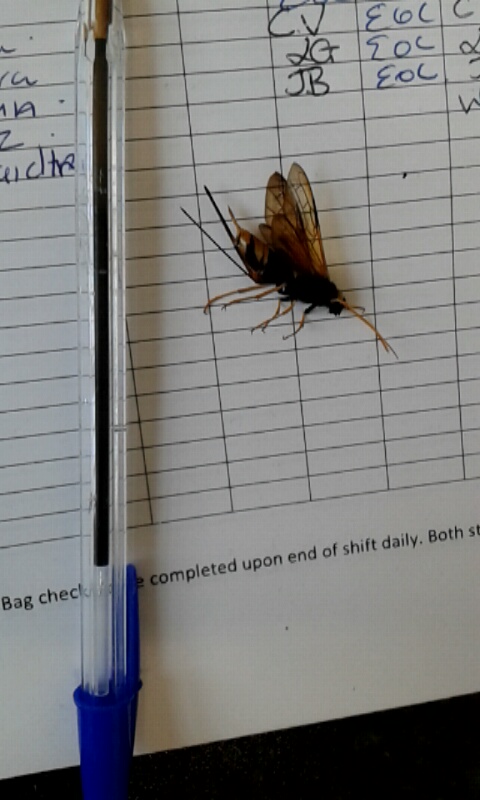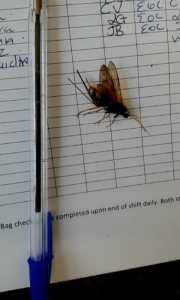 A SHOP assistant on Cruises Street got more than he bargained for this week when he came face to face with what he suspects was a Killer Asian Hornet.
A SHOP assistant on Cruises Street got more than he bargained for this week when he came face to face with what he suspects was a Killer Asian Hornet.
The invasive species, which can send their victims into a fatal anaphylactic shock, can kill 50 bees a day by ripping off their heads, and are also deemed responsible for around six deaths in France last year.
“It was about 3cms in length, much bigger than a wasp. It just flew into the shop and landed on the window. I wasn’t going anywhere near it. It just stayed there for about 20 minutes before it died. I kept a very close eye on it,” Wesley told the Limerick Post.
“When I saw it first I thought it was a dragonfly or something. It was like nothing I had seen before. I had read stories recently about Killer Asian Hornets being found in England and it certainly looked like one,” he insists.
Also called ‘Vespa velutina’, the lethal hornets were believed to have been imported into France in 2004 in a shipment of pottery from China. The venomous pest, which grows to about two-inches in length, has a powerful sting that can kill humans in minutes.
“It was obviously on its last legs when it flew in. After it died I disposed of it in a bin outside. I put some photographs up online later on and got a huge reaction,” Wesley tells me.
There have been several reported sightings of killer hornets in different parts of the UK this summer.
A pest control expert in Limerick took a look at photographs of the mysterious insect seen in Cruises Street for us this week.
“Difficult to tell from a photo but it looks like a wood wasp,” he said.
The Asian hornet is a day-flying species which ceases activity at dusk. It nests in trees as well as garages sheds and holes in the wall or ground.
by Alan Jacques


 A SHOP assistant on Cruises Street got more than he bargained for this week when he came face to face with what he suspects was a Killer Asian Hornet.
A SHOP assistant on Cruises Street got more than he bargained for this week when he came face to face with what he suspects was a Killer Asian Hornet.



